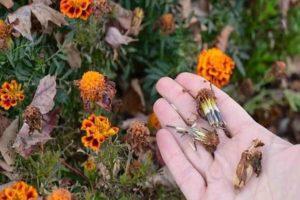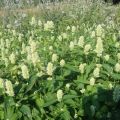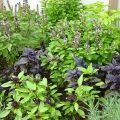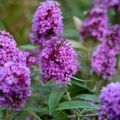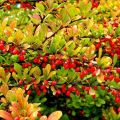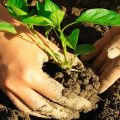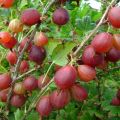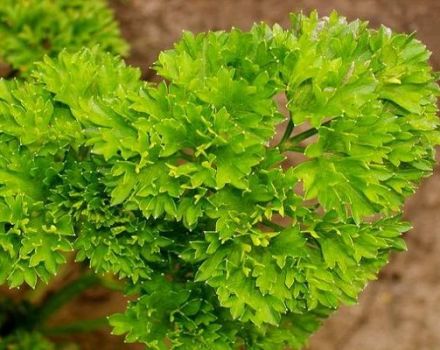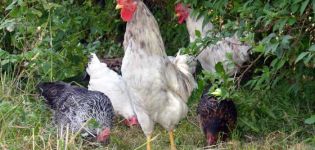Useful properties of aniseed lofant, planting and care in the open field
The anise species of the lofant was bred by breeders. It cannot be found in its natural environment. All folk medicine men know about its beneficial properties. The leaves and shoots of the shrub are widely used for culinary and health purposes. Many gardeners grow it in their own garden. The plant is unpretentious in care, takes root well and gives lush inflorescences.
Content
- 1 General description of the plant
- 2 The chemical composition of aniseed lofant
- 3 The healing properties of the plant
- 4 Ways to use culture
- 5 Contraindications and possible harm
- 6 Growing features
- 7 Care Tips
- 8 Protection against diseases and pests
- 9 Preparing for winter
- 10 Harvesting and storage
- 11 The best varieties
General description of the plant
A perennial plant in the form of a shrub. In height, the anise lofant reaches 1-1.5 meters. The stems are tetrahedral, the leaves are elongated, lanceolate, with jagged edges. 4-6 shoots grow on one bush. Flowering begins in June, bud development in May.
The flowers of the lofant are aniseed, dark purple, spike-shaped. One inflorescence is 14-16 cm long. Small flowers are collected in it. After flowering, forms a dark brown fruit with seeds inside. Anise lofant grows in one place for 6 years without losing the quality of flowering. The number of shoots doubles every year. The plant has a bright aniseed scent.
The chemical composition of aniseed lofant
The aniseed lofant contains the following trace elements and substances:
- calcium;
- iron;
- boron;
- potassium;
- iodine;
- magnesium;
- sodium;
- tannins;
- vitamins C and PP;
- essential oils;
- gallic acid;
- caffeic acid;
- chlorogenic acid;
- flavonoids;
- choline;
- alkaloids;
- antibiotics.
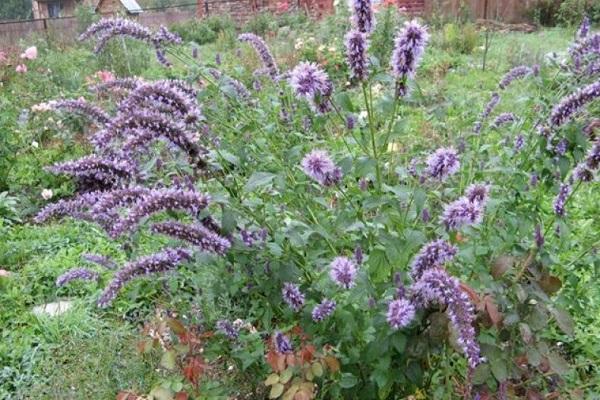
The healing properties of the plant
Lofanta herb has medicinal properties. It is actively used in folk medicine and industry. Its oils and decoctions are found in cosmetics, medicines and condiments. Lofant has the following beneficial properties:
- strengthens the body's immune system;
- improves metabolic processes;
- reduces high blood pressure;
- strengthens the walls of blood vessels;
- improves skin condition;
- normalizes liver function, stimulates the outflow of bile;
- lowers blood cholesterol levels;
- improves male potency;
- has a regenerating effect, helps to heal wounds;
- has anti-edema properties, removes excess fluid from the body;
- cleanses the body of toxins and toxins;
- prevents the development of malignant and benign tumors;
- promotes the discharge of phlegm with prolonged dry cough;
- eliminates the development of blackheads and acne;
- helps to overcome the symptoms of allergic reactions;
- calms the nervous system, relieves stress and depression;
- helps to overcome intoxication.
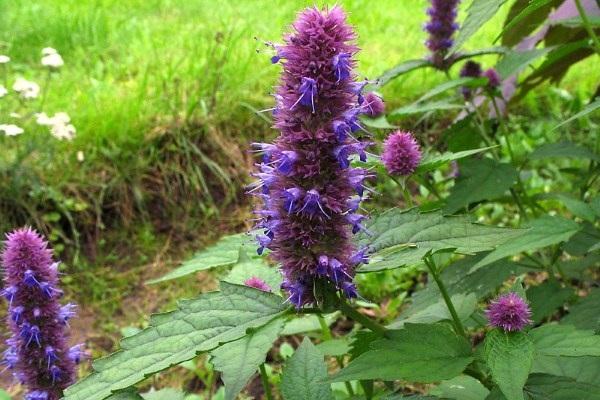
Ways to use culture
The upper part of the plant is used in the form of decoctions, infusions, alcoholic tinctures, spices, baths and face masks. Lofant essential oil is widely used in industry. It is added to cosmetics and sold in its pure form. The shrub is mainly used in folk medicine.
Decoctions
To prepare a lofant decoction, take 100 grams of dried herbs and pour boiling water over it. Cover with a lid for 30 minutes. The resulting liquid is filtered and taken orally, 2-3 glasses per day.
Infusions
The infusion from the plant is prepared according to the following recipe. 300 grams of fresh or dry herbs are placed in a thermos. Pour 1 liter of boiling water. Tightly tighten the lid and leave overnight. In the morning, the resulting liquid is filtered, poured into dishes and stored in the refrigerator. Take an infusion of 3 tbsp. l. 3-4 times a day.
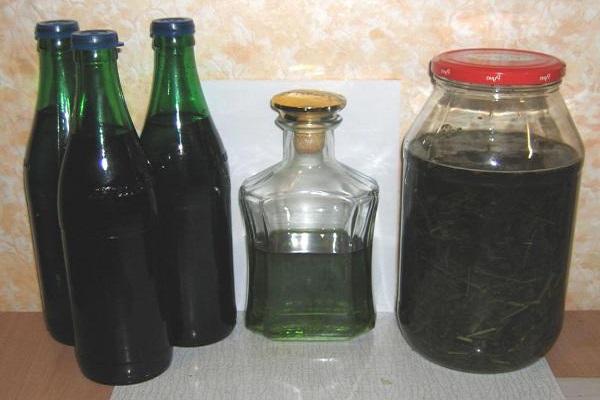
Alcohol tincture
An alcoholic infusion is prepared from a concentrated broth of a lofant. One hundred grams of herbs are poured into 200 ml of water. They insist for several hours. The infusion is poured with vodka and insisted for 30-40 days in a dark place. Take 2 tbsp. l. in a day.
Baths
Before taking a bath, prepare 2-3 liters of decoction from the leaves and flowers of the shrub. 300 grams of herbs are poured with boiling water, infused for 30 minutes and poured into the bath. The procedure takes 20-30 minutes. These baths have a calming effect on the nervous system and promote sound sleep.
Important! Lofant baths can be taken by newborns with restless sleep, but strictly according to the indications of the pediatrician.
Face masks
In cosmetics stores, you can buy a ready-made face mask containing lofant essential oils. They can also be prepared at home. Fresh grass is crushed, 1 tsp is added. honey, 3 tbsp. l. fresh milk. The mixture is mixed well and applied to the face. Withstand 15-20 minutes and wash off. These masks strengthen skin tone and prevent aging.
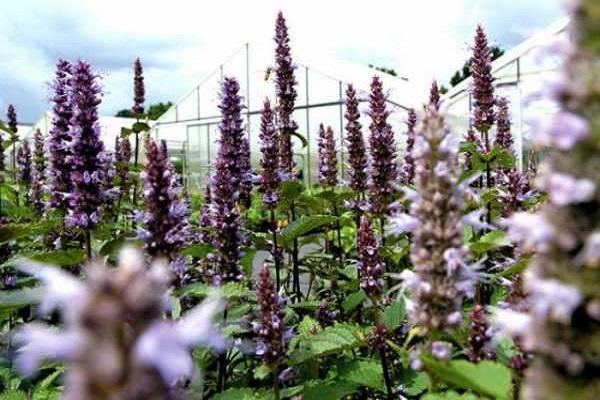
Cooking
In cooking, crushed dried plants are used in combination with other herbs or as an independent component. It is added to meat and fish dishes. Fruit and vegetable salads are seasoned with lofant. Fresh leaves of the plant are used for decoration in pastry dishes. Jam is made from lofant and used in winemaking.
Contraindications and possible harm
Excessive and frequent use of lofant can cause health problems:
- low pressure;
- leaching of useful trace elements from the body;
- sleep disturbance;
- metabolic problems.
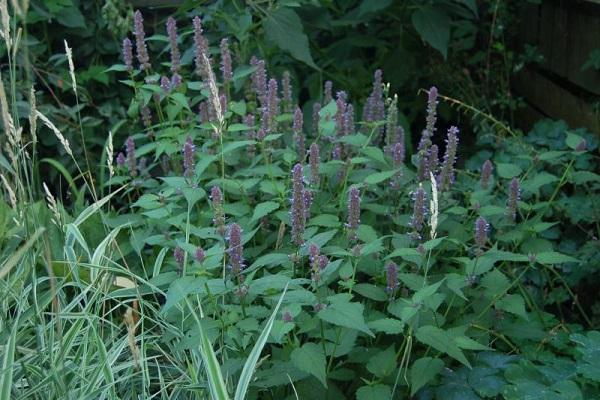
Also, taking a lofant as a remedy has its own contraindications:
- an allergic reaction to a plant;
- intolerance to its components;
- epilepsy;
- thrombophlebitis;
- chronic hypotension;
- oncological diseases;
- pregnancy;
- lactation period;
- newborns;
- persistent muscle cramps.
Growing features
For the successful cultivation of aniseed lofant, it is necessary to observe the timing of planting seeds, choose a suitable place, and plant the seeds correctly.

Landing dates
In March, seedlings are prepared. The seeds are sown in pots. After 2 months, the germinated plants are transferred to open ground. In May, active growth of shoots begins and the beginning of budding. In early June, the shrub blooms.
Also, seeds are sown immediately in open ground in mid-March, after the snow melts. After 2-2.5 months, shoots begin to erupt.
Important! When sowing by seedlings, flowering begins 30-40 days earlier.
Site preparation
Choose a place for the lofant, well lit by sunlight, with dry and fertile soil. The shrub does not tolerate acidic soils, so dolomite flour must first be added. In clayey and often flooded soils, the plant will die.
The preparation of the site is carried out in the fall, it is dug up, all stones and weeds are removed.Dolomite flour, humus or mineral fertilizers are added.
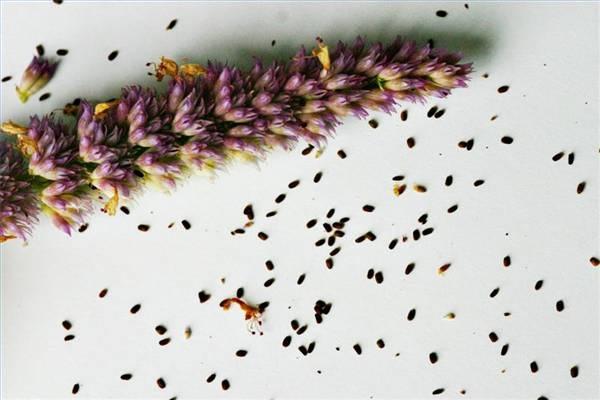
Lofant should not be planted in the ground after growing the following crops:
- cucumber;
- turnip;
- beet;
- turnip.
Sowing seeds in the ground
Sowing shrub seeds in the ground is performed according to the algorithm:
- In a previously prepared area, grooves are made with a depth of 0.5-1 cm.
- A distance of 50 cm is maintained between the rows.
- Warm water is poured into the recesses.
- Seeds are laid in the grooves.
- The seeds are covered with soil.
After the first shoots appear, they are thinned out, leaving a distance of 25-30 cm between the plants. Thinning is carried out after the presence of 2-3 leaves.

Seedling period
To obtain seedlings, choose a plastic pot with a drainage hole and a tray. Landing is carried out according to the algorithm:
- The pot is filled with soil.
- A deepening of 0.5 cm is made in the soil.
- Pour warm water into it.
- Place the seeds in the hole.
- Buried with soil.
- Cover with a transparent film.
- Placed in a warm place.
Watering and airing is carried out daily. Mineral fertilizers are applied every 2 weeks. After the appearance of 5-6 pairs of leaves, young shrubs are transferred to the ground. They are planted at a distance of 25-30 cm from each other, and a gap of 50-60 cm is left between the rows.
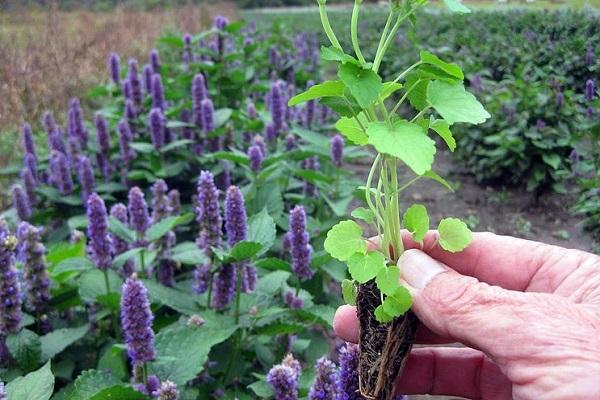
Care Tips
In order for the shrub to please with abundant flowering, it is necessary to provide it with proper care. To do this, follow several rules:
- Each bush is watered with warm water once a week. The water should be prepared in advance, warm.
- After trimming the shoots, the anise lofant is fed with mullein infusion.
- Regular weeding is carried out in the presence of weeds.
- The division of the bush for propagation is carried out in spring or autumn.
- The more often the peduncles are cut, the more often new ones are formed.
- The plant is drought-resistant and does not tolerate excess moisture.
- Drainage is recommended when planting seeds.
- For the winter, the lofant is covered, since it does not have winter-hardy properties.
- Treatment for diseases and pests is carried out if necessary.

Protection against diseases and pests
Anise lofant has strong immunity. Subject to all growing conditions, he does not get sick. However, when high humidity appears at the roots, the immunity of the shrub decreases and infection with infectious diseases occurs. It is affected by fungal infections:
- powdery mildew;
- fusarium;
- rhizoctonia;
- rust.
To fight infections, they are treated with fungicidal preparations and copper sulfate. Pest insects rarely attack shrubs. It has a specific smell that attracts bees and repels pests. In rare cases, black aphids and thrips attack. To combat them, they are treated with insecticides.
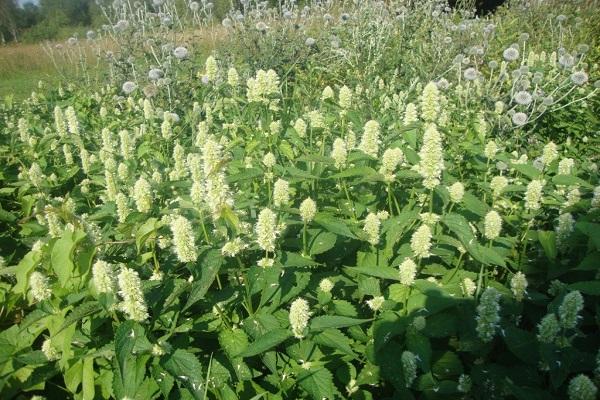
Preparing for winter
Lofant does not tolerate frost well. In warm regions, the shoots of the shrub are cut off, leaving 10-12 cm above the soil. Cover the root area with dry leaves, moss or a special cloth. In the northern regions, it is recommended to transfer the shrub to a greenhouse or transplant it into a pot for the winter.
You can also grow the lofant as an annual plant. At the end of the season, the bushes are uprooted and then destroyed. And for the next season, they are preparing new seedlings.
Harvesting and storage
To use the leaves in cooking, they are cut from the shrub at any time. When grown in order to obtain medicinal raw materials, shoots are cut before flowering. Cut no longer than half so that the shrub can quickly recover. During this period, the leaves and shoots of the plant contain the greatest amount of nutrients.
Cut leaves and shoots are transferred to a cool room with good ventilation. Spread the material in a thin layer and wait for drying. Every day they check the condition of raw materials, remove spoiled or rotten leaves. After drying, the herb is collected in glass or ceramic dishes. You can store the lofant for 1.5 years, then the grass loses its beneficial properties.
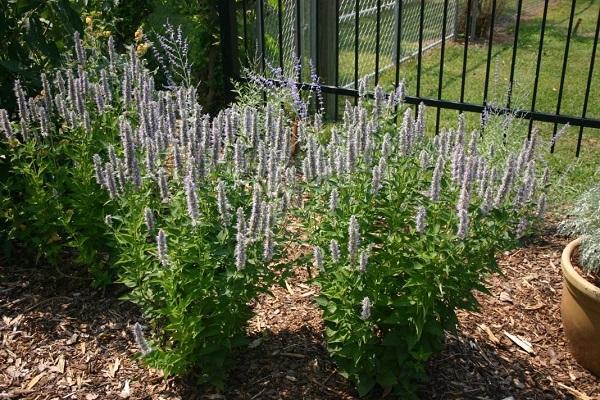
The best varieties
Anise lofant has many varieties. Many of them are very popular with gardeners. The most popular varieties are:
- Summer resident;
- Honey bee Blue;
- Blue Spike;
- Dandy;
- Premier;
- Snowball;
- Witch Doctor.
Each variety has its own characteristic smell and color of flowers. Lofant is planted next to linden and acacia, as the plant is an excellent honey plant.
